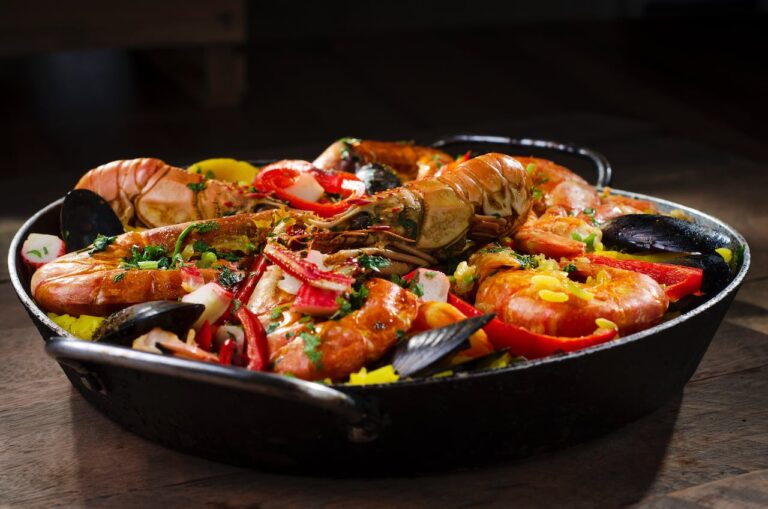Eating fish and seafood can provide multiple health benefits, from lowering heart disease risk to promoting brain development. However, not all fish are created equal when it comes to nutrition.

Some types of fish are incredibly nutritious, packed with protein, omega-3 fatty acids and essential vitamins and minerals. Meanwhile, other varieties are high in mercury or low in overall nutrients.
To help simplify which seafood options are the best and worst for your health, we’ve created this definitive seafood nutrition tier list. We’ll explore each tier in detail and provide examples of the most nutritious as well as least healthy fish.
S Tier: The Most Nutritious Fish
Landing in the S tier are fish that are nutritional powerhouses, loaded with omega-3 fats and other nutrients while being low in mercury and contaminants. Eating these varieties once or twice a week can help lower inflammation, boost heart health and enhance brain function.
Salmon
This oily fish is one of the best sources of long-chain omega-3 fatty acids like EPA and DHA, which have been linked to a reduced risk of heart disease, stroke, depression and other conditions (1, 2). Salmon is also loaded with high quality protein, B vitamins, selenium and potassium.
Mackerel
Along with salmon, mackerel is one of the fattiest fish and contains substantial amounts of omega-3s. Studies show that eating mackerel can help lower blood pressure, increase HDL “good” cholesterol and reduce plaque buildup in arteries (3, 4).
Sardines
These small, tasty fish are not only sustainable, but also brimming with nutrients. Sardines provide over 100% of the RDI for vitamin B12 in just one serving and are exceptionally high in selenium, niacin and vitamin D (5).
Anchovies
Anchovies boast an impressive nutrient profile for their size. Just one ounce supplies over 100% of the RDI for vitamin B12, selenium and phosphorus (6). Anchovies are also high in calcium, making them an ideal choice for bone health.
Herring
Though not as popular as other fish, herring is a nutrition all-star. It’s exceptionally high in vitamin D, selenium, calcium and phosphorus in addition to its abundance of omega-3 fatty acids (7).
Oysters
Oysters stand out as one of the best sources of zinc among all foods. Just six medium oysters meet almost 500% of your daily zinc needs (8). Oysters are also rich sources of copper, vitamin B12 and selenium.
A Tier: Excellent Seafood Choices
The A tier contains fish that are not quite as nutritious as the S tier, but still provide an impressive array of nutrients along with high-quality protein. Enjoy these fish one to two times per week for robust health benefits.
Rainbow Trout
Farmed rainbow trout contains a hefty amount of omega-3 fatty acids, providing over 100% of the RDI in a 4-ounce serving (9). Trout also supplies lots of potassium, selenium and B vitamins.
Albacore Tuna
Also called white tuna, albacore tuna has significantly more omega-3 fatty acids than the canned “light” variety. Each 4-ounce serving boasts well over 300 mg of EPA and DHA (10). It’s also loaded with niacin, vitamin B6 and magnesium.
Cod
This flaky white fish is a familiar staple due to its mild taste and texture. Though lower in omega-3s than the S tier fish, cod still provides protein and vitamins like B12, niacin and selenium (11).
Pollock
Pollock is a sustainable white fish that packs 20 grams of protein into a 3-ounce cooked portion (12). It also offers some omega-3 fatty acids as well as magnesium, potassium and vitamins B1 and B6.
Halibut
With its sweet, buttery flavor, halibut is popular in seafood restaurants. It has impressive amounts of magnesium, potassium, selenium and B vitamins (13).
Mussels
These shellfish are low in calories but high in many nutrients. A one-cup serving of cooked mussels meets your entire daily needs for selenium and vitamin B12 (14).
B Tier: Moderately Nutritious Seafood
The fish and shellfish in the B tier offer good nutrition for lower amounts of omega-3 fatty acids. Aim for one serving weekly of these varieties.
Tilapia
A go-to for fish tacos and fish and chips, tilapia is low in fat and calories while providing niacin, vitamin B12, potassium and selenium (15). Keep portions in check as tilapia is also relatively high in cholesterol.
Mahi Mahi
Also called dorado or dolphinfish, mahi mahi has a firm texture and sweet, mild flavor. It delivers protein as well as vitamin B12, niacin, vitamin B6 and potassium (16).
Squid
Calamari is a favorite appetizer made from squid. Surprisingly, squid contains several nutrients like copper, phosphorus and B vitamins, though omega-3 content is low (17).
Scallops
These delicious mollusks supply an impressive amount of protein, along with vitamin B12, zinc, iron, magnesium and copper (18). Scallops are low in fat and high in cholesterol, so keep servings moderate.
Sole
A cousin of flounder, sole is another white fish that’s low in fat and calories. It provides niacin, vitamin B6, vitamin B12, potassium and zinc (19).
Snapper
Common in tropical cuisine, snapper is a lean fish with modest amounts of omega-3 fatty acids. It’s a good source of protein, niacin, vitamin B6, potassium and selenium (20).
C Tier: Low in Nutrients
The C tier contains seafood that is low in omega-3 fatty acids as well as most other nutrients. These picks are better saved for occasional meals rather than regular rotation.
Shrimp
America’s favorite seafood is quite low in nutrients. Aside from protein, calcium and selenium, shrimp has minimal vitamin and mineral content (21). It’s also high in cholesterol, with over 200 mg in a 3-ounce serving.
Canned Tuna
The inexpensive canned “light” tuna lacks most nutrients aside from protein, selenium and vitamin B12. However, it also contains less mercury than fresh tuna (22).
Catfish
A favorite in Southern cooking, catfish is another low-fat but nutrient-poor choice. The small amounts of magnesium, potassium and selenium don’t make up for the low omega-3 content (23).
Crab
Crab meat is cherished for its unique, sweet flavor. Yet it’s also low in heart-healthy fats and most vitamins and minerals, aside from a decent protein content (24). It’s also very high in cholesterol.
Lobster
Lobster is legendary for its tender, succulent flesh. However, it lacks omega-3 fatty acids and virtually all vitamins and minerals, except for a small amount of copper (25). It’s also exceedingly high in cholesterol.
D Tier: Worst Seafood for Health
Lastly, the D tier contains fish to limit or avoid altogether due to high mercury levels or low nutrient density. Despite their popularity, these seafood staples don’t promote optimal health.
Farmed Salmon
Although farmed salmon is widely available year-round, it lacks the impressive nutrition of wild salmon. Farm-raised salmon contains less omega-3s, more saturated fat and higher amounts of contaminants (26).
Tuna Steak
Fresh tuna steak ranks high in mercury, with levels nearly five times higher than the safer canned “light” variety (27). Limit tuna steak to no more than once per month.
Swordfish
The rich, meaty flesh of swordfish unfortunately carries high mercury concentrations as well. Pregnant women should avoid swordfish completely, while other adults should limit intake (28).
Orange Roughy
This mild, slightly sweet fish is not a nutritious choice. Orange roughy offers minimal protein and omega-3s and is high in mercury contamination (29).
King Mackerel
King mackerel is extremely high in mercury, containing more than five times the upper safe limit (30). It’s best for pregnant women and children to avoid king mackerel altogether.
To maximize the health benefits of seafood, opt for the most nutritious varieties like salmon, sardines, anchovies and oysters more often. Occasionally enjoy moderately nutritious picks like tilapia, snapper and shrimp. Finally, limit or avoid poor choices such as orange roughy, king mackerel and farmed salmon when possible.
Hey there! We hope you love our fitness programs and the products we recommend. Just so you know, Symku Blog is reader-supported. When you buy through links on our site, we may earn an affiliate commission at no extra cost to you. It helps us keep the lights on. Thanks.
Disclaimer: The information provided in this discussion is for general informational and educational purposes only. It is not intended as medical or professional advice. Only a qualified health professional can determine what practices are suitable for your individual needs and abilities.

